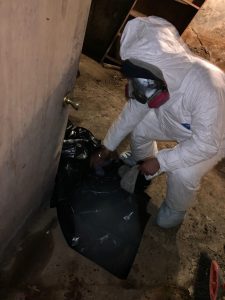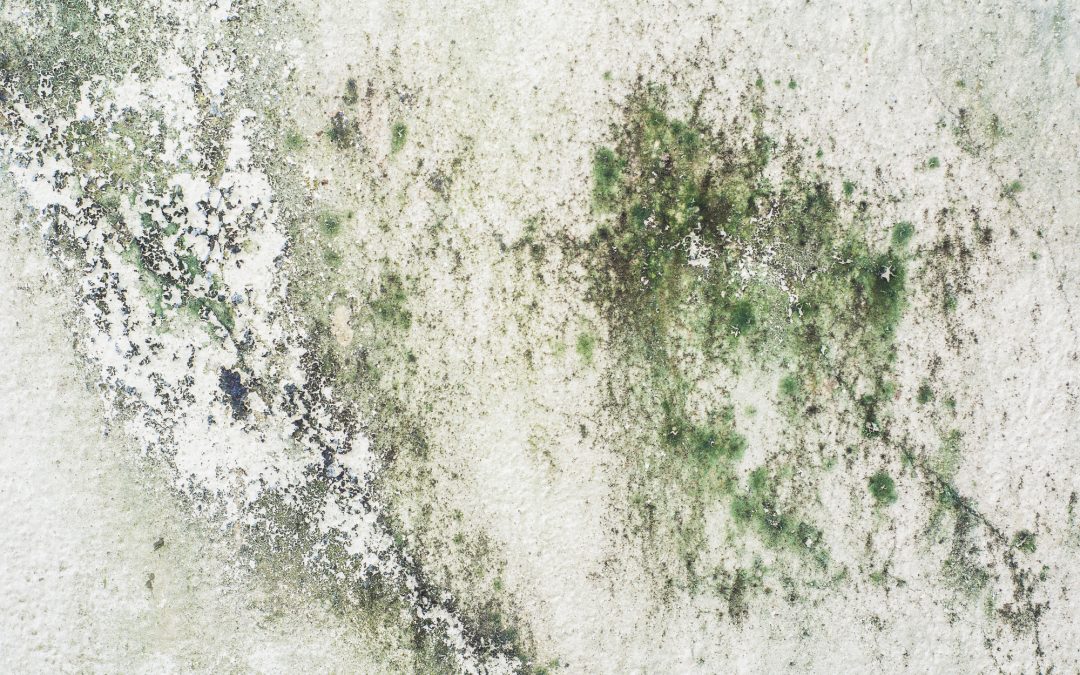How Experts Remove Molds Using Effective Techniques
Mold infestations are a common concern for homeowners, posing risks to both property and health. How experts remove molds can be effective for lasting security. While DIY approaches may provide temporary relief, effective mold removal requires professional expertise and specialized techniques. In this comprehensive guide, we delve into the intricacies of mold removal, exploring how professionals tackle mold infestations to ensure thorough remediation and long-term prevention.
Understanding Mold
Before delving into removal techniques, it’s essential to understand the nature of mold. Mold is a type of fungus that thrives in damp, humid environments, spreading through airborne spores and colonizing porous surfaces such as drywall, wood, and upholstery. Common types of mold include black mold (Stachybotrys chartarum), which can produce toxins harmful to human health, and other varieties such as Aspergillus and Cladosporium.
How Molds Form
- Moisture: Mold formation typically begins with excess moisture in indoor environments. Sources of moisture may include leaks, condensation, high humidity levels, or water intrusion from floods or plumbing issues.
- Organic Matter: Mold requires organic matter to grow and thrive. Common organic materials susceptible to mold colonization include wood, drywall, paper, fabric, carpeting, and insulation.
- Warmth: Most molds thrive in environments with temperatures ranging from 70 to 90 degrees Fahrenheit (21 to 32 degrees Celsius). Warmer temperatures facilitate the growth and proliferation of mold spores.
- Poor Ventilation: Inadequate ventilation can contribute to moisture buildup and stagnant air, creating favorable conditions for mold growth. Areas with poor ventilation, such as bathrooms, kitchens, basements, and attics, are particularly prone to mold infestations.
- Humidity: High humidity levels can create a conducive environment for mold growth, especially in areas with poor air circulation. Relative humidity above 60% can promote mold proliferation, particularly in humid climates or during rainy seasons.
- Lack of Sunlight: Mold thrives in dark, damp environments where sunlight penetration is limited. Areas that receive little to no sunlight, such as basements, crawl spaces, and closets, are susceptible to mold growth if moisture levels are high.
- Organic Debris: Accumulation of organic debris, such as leaves, mulch, and soil, around the exterior of buildings can provide a breeding ground for mold spores. Moisture-retaining organic matter creates ideal conditions for mold colonization on building exteriors and in crawl spaces.

How Experts Remove Molds
Assessment and Inspection – How Experts Remove Molds
The first step in professional mold removal is a comprehensive assessment and inspection of the affected area. Certified mold remediation specialists conduct thorough evaluations to identify the extent of the mold infestation, pinpoint moisture sources, and assess potential health risks. Utilizing advanced moisture meters, thermal imaging cameras, and air quality tests, professionals meticulously analyze the environment to develop a customized remediation plan tailored to the specific needs of the property.
Containment and Air Filtration
Effective mold removal begins with containment measures to prevent the spread of mold spores to unaffected areas. Professionals utilize containment barriers, negative air pressure systems, and air scrubbers equipped with HEPA filters to isolate the contaminated area and capture airborne spores. By creating a controlled environment, professionals minimize cross-contamination and ensure the safety of occupants and workers throughout the remediation process.
Safe Removal and Disposal
Once containment measures are in place, professionals proceed with the safe removal and disposal of mold-infested materials. Here some methods that professional use to remove and dispose molds:
- Personal Protective Equipment (PPE): Technicians wear appropriate personal protective equipment, including respirators, gloves, goggles, and protective suits, to minimize exposure to mold spores and mycotoxins.
- Removal of Mold-Infested Materials: Mold-infested materials, such as drywall, insulation, carpeting, and furnishings, are carefully removed and disposed of in accordance with industry standards and local regulations.
- HEPA Vacuuming: High-efficiency particulate air (HEPA) vacuums equipped with HEPA filters are used to capture mold spores and debris from surfaces and air ducts, preventing the spread of contaminants during remediation.
- Damp Wiping: Surfaces affected by mold growth are thoroughly cleaned and sanitized using specialized cleaning agents and damp wiping techniques to remove visible mold growth and residue.
- Biocide Application: EPA-approved fungicides and antimicrobial agents are applied to surfaces to inhibit mold growth and prevent future infestations. Biocides are carefully selected and applied according to manufacturer guidelines and industry best practices.
- Encapsulation: Encapsulation involves sealing porous surfaces with specialized coatings or sealants to prevent mold reemergence and provide long-term protection against microbial growth.
- Air Filtration: Air scrubbers equipped with HEPA filters are used to capture airborne mold spores and improve indoor air quality during the remediation process. Continuous air filtration helps to reduce the risk of cross-contamination and ensure a safe working environment.
- Disposal: Mold-contaminated materials are properly sealed, bagged, and disposed of according to local regulations and environmental guidelines. Professionals ensure that mold-infested materials are transported and disposed of in designated waste disposal facilities to prevent further contamination.
Biocide Application and Antimicrobial Treatment
Following the removal of mold-contaminated materials, professionals apply biocides and antimicrobial agents to inhibit mold growth and prevent future infestations. EPA-approved fungicides and disinfectants are carefully applied to surfaces, penetrating porous materials and eliminating residual mold spores. Additionally, technicians may employ encapsulation techniques to seal surfaces and prevent mold reemergence, providing long-lasting protection against microbial growth.
Drying and Dehumidification
Moisture control is paramount in mold remediation efforts, as mold thrives in damp, humid environments. Professionals utilize industrial-grade drying equipment such as air movers, dehumidifiers, and desiccant systems to extract excess moisture from the air and porous materials. By achieving optimal humidity levels and promoting thorough drying, technicians prevent mold resurgence and create inhospitable conditions for microbial growth.
Post-Remediation Verification
Once remediation efforts are complete, professionals conduct post-remediation verification (PRV) assessments to ensure the effectiveness of the remediation process. Through visual inspections, moisture readings, and air quality testing, technicians verify that mold levels have been reduced to acceptable levels and that the environment is safe for occupancy. PRV reports document remediation outcomes and provide peace of mind to property owners, confirming that mold issues have been successfully resolved.
Preventive Measures and Maintenance
In addition to remediation efforts, professionals emphasize the importance of preventive measures and ongoing maintenance to mitigate the risk of future mold growth. By addressing underlying moisture issues and maintaining a dry, well-ventilated environment, homeowners can safeguard their properties against mold infestations and preserve indoor air quality. Here are some preventive measures and maintenance to prevent molds from growing back:
- Monitor Indoor Humidity Levels: Maintain indoor humidity levels below 60% to prevent moisture buildup and discourage mold growth. Use dehumidifiers in areas prone to high humidity, such as basements, bathrooms, and laundry rooms.
- Address Water Leaks Promptly: Repair plumbing leaks, roof leaks, and water seepage promptly to prevent moisture intrusion and potential mold growth. Regularly inspect pipes, faucets, and appliances for signs of leaks or water damage.
- Improve Ventilation: Ensure adequate ventilation in bathrooms, kitchens, and other moisture-prone areas to reduce humidity levels and promote air circulation. Install exhaust fans, open windows when possible, and use ventilation systems to remove excess moisture.
- Use Mold-Resistant Materials: Use mold-resistant building materials, such as mold-resistant drywall, paint, and insulation, in areas susceptible to moisture and humidity. These materials help prevent mold growth and provide added protection against microbial colonization.
- Clean and Maintain HVAC Systems: Regularly clean and inspect HVAC systems, air ducts, and filters to prevent the buildup of dust, debris, and mold spores. Replace filters as recommended by the manufacturer and schedule professional HVAC maintenance to ensure optimal performance.
- Properly Seal and Insulate: Properly seal windows, doors, and exterior walls to prevent moisture intrusion and drafts. Insulate pipes and ductwork to prevent condensation and reduce the risk of water damage and mold growth.
- Promote Drainage Away from the Foundation: Ensure proper grading and drainage around the foundation of the home to divert water away from the structure. Install gutters, downspouts, and French drains to channel rainwater away from the foundation and prevent water infiltration.
- Keep Indoor Spaces Clean and Dry: Regularly clean and disinfect surfaces, especially in bathrooms, kitchens, and basements, to remove mold spores and prevent microbial growth. Promptly dry wet or damp areas, such as carpets, upholstery, and clothing, to prevent mold proliferation.
- Monitor and Maintain Roofing Systems: Inspect and maintain roofing systems regularly to identify and repair damaged shingles, flashing, and seals. Ensure proper roof ventilation to reduce moisture buildup and prevent attic mold growth.
- Conduct Regular Inspections: Schedule routine inspections of the home’s interior and exterior to identify potential moisture problems, water leaks, and signs of mold growth. Address any issues promptly to prevent mold infestations and minimize damage to the property.
By implementing preventive measures and practicing regular maintenance, homeowners can effectively reduce the risk of mold growth and maintain a healthy indoor environment for themselves and their families.
Effective mold removal requires a systematic approach, combining thorough assessment, containment, removal, treatment, and prevention strategies. How experts remove molds will determine the type of mold involved, the equipment and chemicals that may be necessary as well. Professional mold remediation specialists possess the expertise, equipment, and techniques necessary to address mold infestations safely and effectively. By understanding the intricacies of mold remediation and partnering with certified professionals, homeowners can ensure comprehensive remediation and long-term protection against mold-related issues, fostering a healthy and mold-free living environment for years to come.

